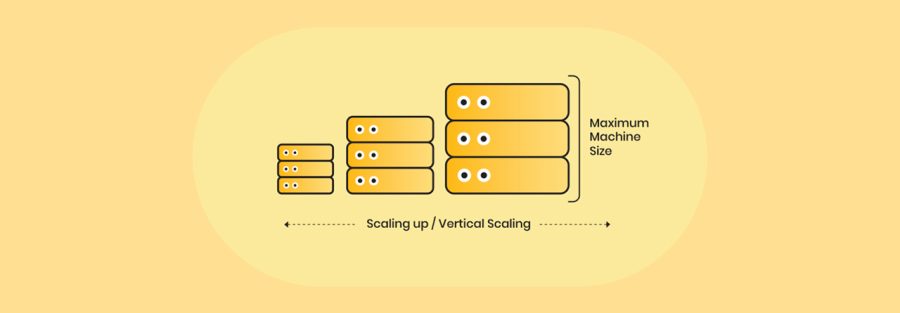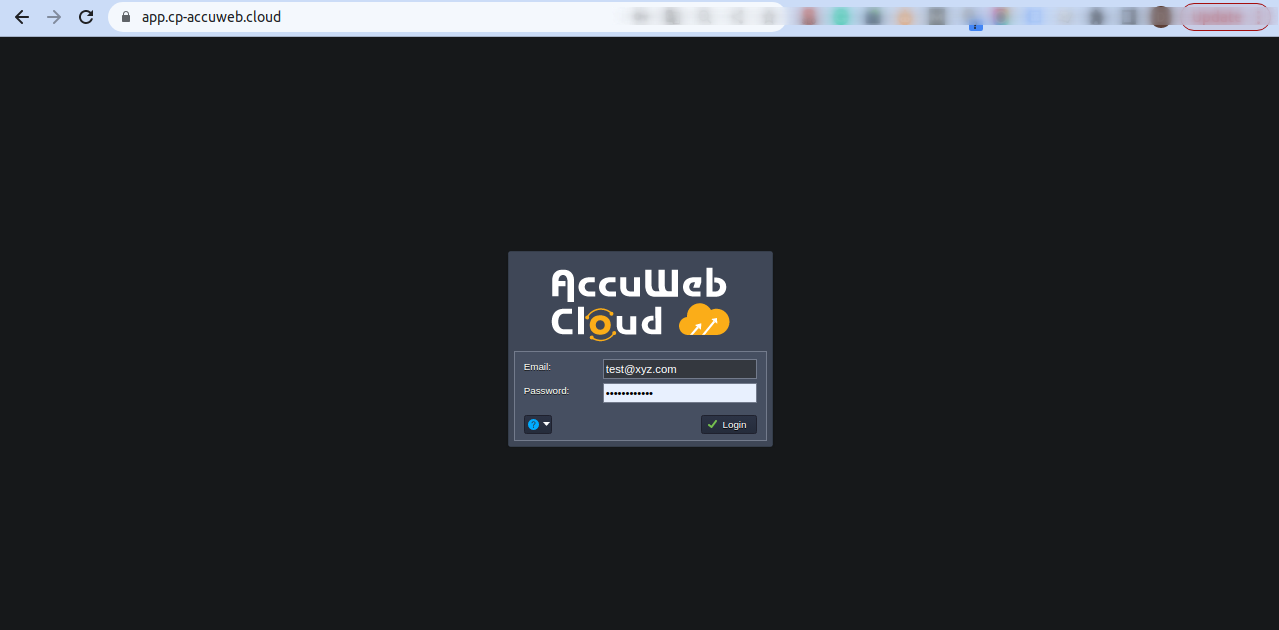Explore Automatic Vertical Scaling With AccuWeb.Cloud Platform
The platform is unique among Cloud PaaS providers because it can automatically scale any application vertically and horizontally, providing unparalleled flexibility for hosting your applications.
The platform achieves automatic vertical scaling by dynamically adjusting the allocation of server resources (RAM and CPU) in response to the application’s real-time requirements and without manual intervention.
This feature ensures that you never pay for resources you don’t use and saves you time by eliminating the need for load-related adjustments or architectural changes.
You just set the maximum limit you’re willing to use, and the platform automatically determines the right amount of resources your app needs, all while monitoring incoming traffic in real time.
How It Works
The fundamental concept behind automatic scaling is relatively straightforward: when an application’s workload increases, the platform provides it with extra resources, and when the workload decreases, the platform automatically reduces the allocated resources.
In this process, resources are allocated instantly without any delays or adverse effects on your application.
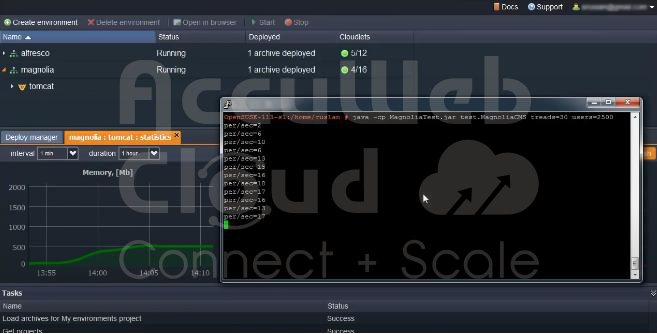
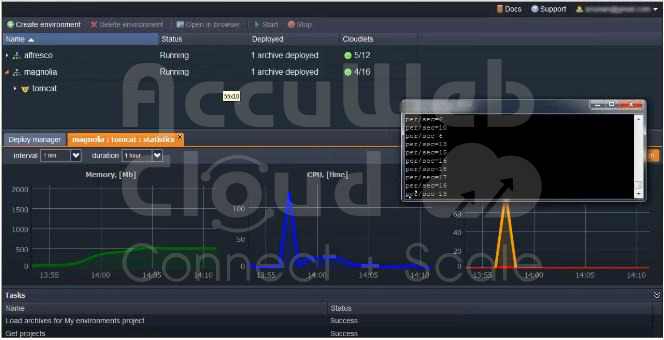
Tip: The vertical scaling feature applies to all instances within the environment (i.e., application servers, databases, load balancers, Docker containers, Elastic VPS, cache instances, and build nodes).
As demonstrated in the pictures above, the platform measures resources using special units called “cloudlets,” which offer a higher level of granularity during scaling. A cloudlet is approximately equivalent to 128 MiB of RAM and a 200 MHz CPU core.
Know more about horizontally on AccuWeb.Cloud dashboard.
Two types of cloudlets are available: reserved and dynamic.
Reserved cloudlets are employed to specify the quantity of resources you predict your application will undoubtedly use, and you are billed for them regardless of the actual consumption. However, they are priced lower compared to dynamic cloudlets.
Dynamic cloudlets determine the resources your application can access as needed. You are only charged for them when they are used.
Automatic vertical scaling adjusts within the specified dynamic cloudlets range. You can set your scalability limits through the appropriate settings to cap your budget, preventing unexpected or high bills.
Know more about resource allocation strategy.
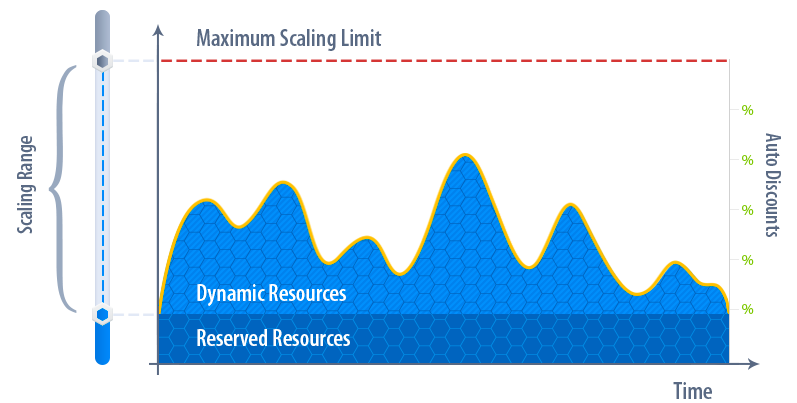
You can use both cloudlets in various combinations and select the pricing model that best fits your needs.
Book a Demo to Experience our dashboard in detail!
Adjusting Resource Limits
When you create a new environment, it’s given a specific number of cloudlets. How many resources it uses depends on the types and quantity of your software stacks. When you add a heap to the environment, it automatically gets the number of cloudlets it needs to work correctly.
Suppose you want to modify these settings and adjust the scale of your environment.
In that case, you can manually increase or decrease the maximum available resources (cloudlets) through the Environment topology wizard. To do this, use the cloudlet sliders in the Vertical Scaling section of the wizard’s central pane.

Note: If you modify the scaling limit (i.e., the number of dynamic cloudlets) for an existing application server, database, or cache node, that specific layer will undergo a restart.
You will receive a warning within the topology wizard to indicate this.
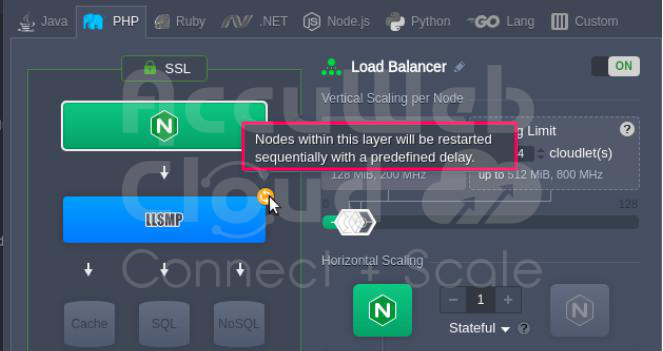
You can utilize the automatically collected statistics to assess your resource consumption over the past month and adjust resource allocation accordingly.
If your application gains significant popularity and a single server’s capacity falls short, you can scale it horizontally by either manually increasing the number of nodes or configuring a set of triggers for the automatic horizontal scaling of your application server.

Jilesh Patadiya, the visionary Founder and Chief Technology Officer (CTO) behind AccuWeb.Cloud. Founder & CTO at AccuWebHosting.com. He shares his web hosting insights on the AccuWeb.Cloud blog. He mostly writes on the latest web hosting trends, WordPress, storage technologies, and Windows and Linux hosting platforms.
